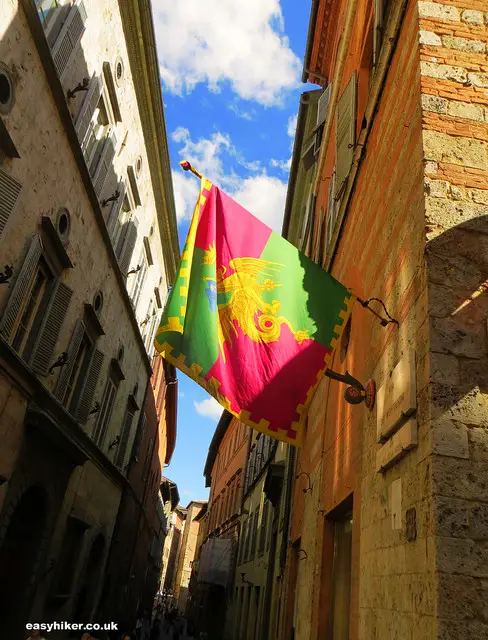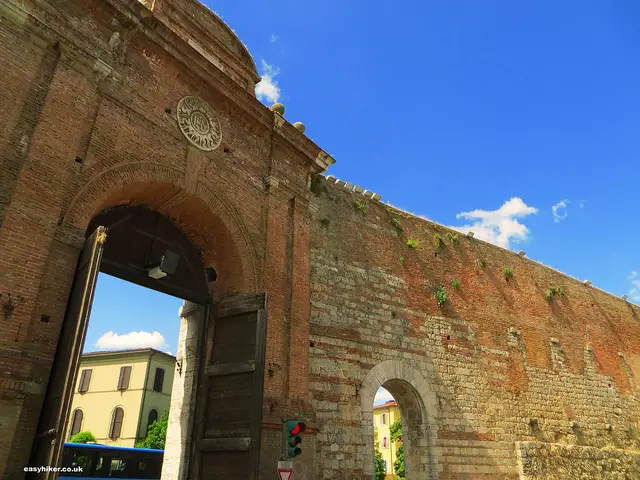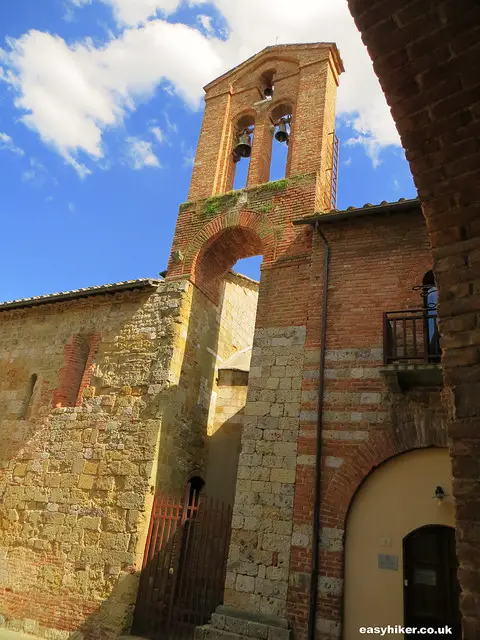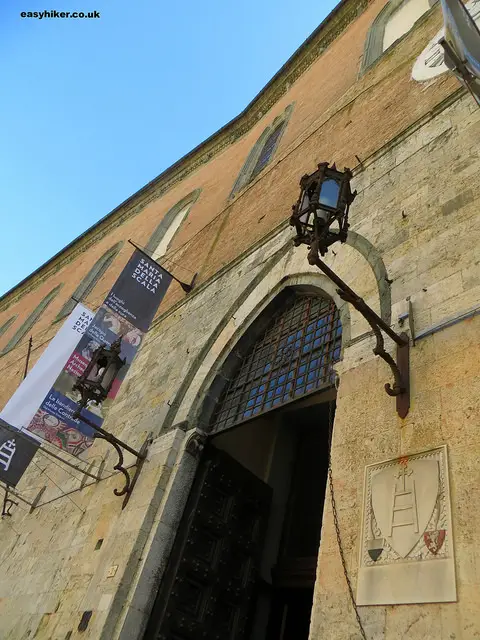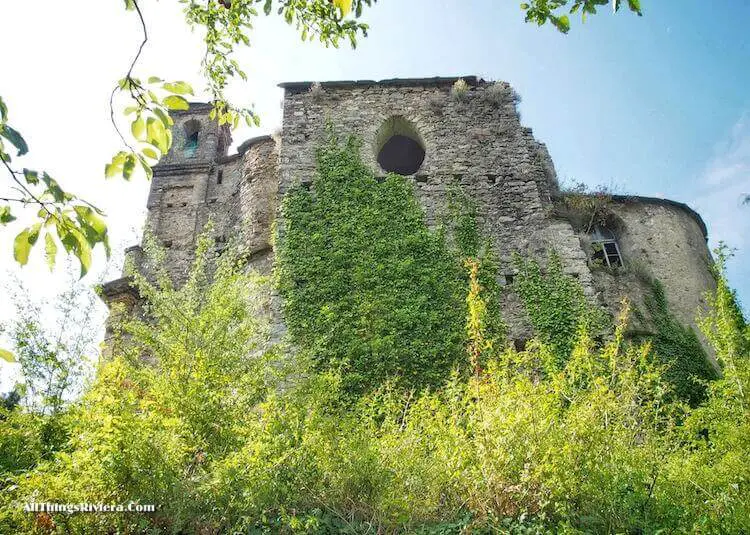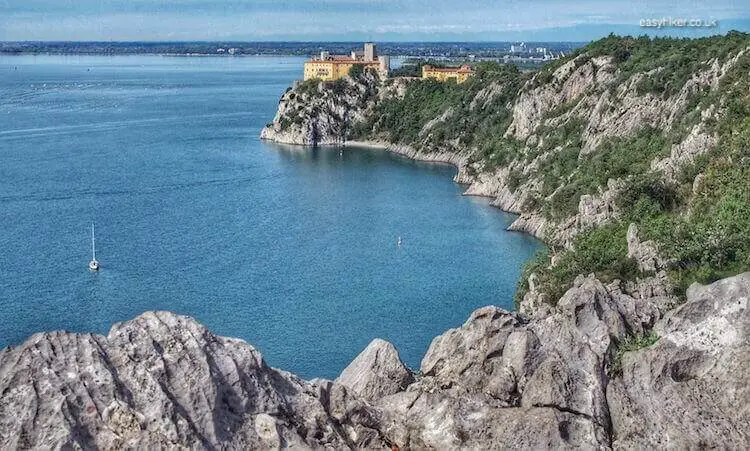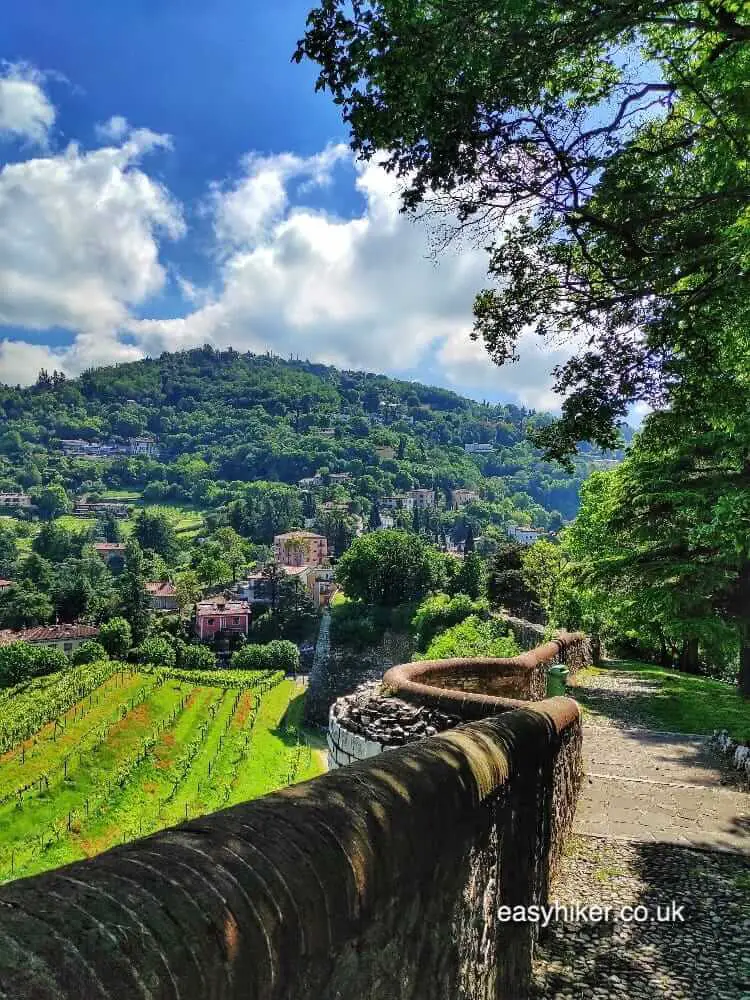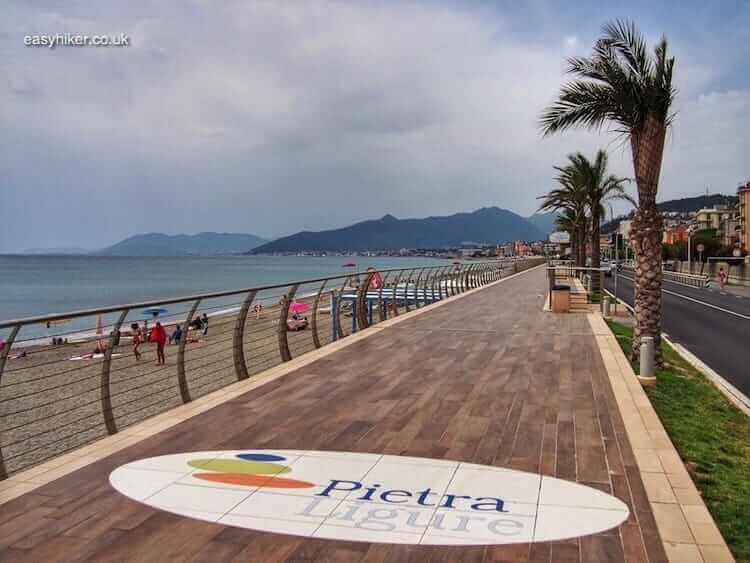Once the Pilgrim’s Progress has led him to Siena, the Pilgrim may be excused for thinking that it will not get much better than this
For nearly a thousand years, the 2 km stretch of the Via Francigena that cuts through the city of Siena has been the highlight of the trail.
Imagine: most of the medieval pilgrims who came here from northern Europe would have been raised in smoke-filled peasant huts that were made from wood, and the cities they knew were tightly woven mazes of timber-framed hovels with an excrement-filled gutter running in the middle. They would have left behind the northern European lowlands with their leaden skies, muddy soils and near-permanent drizzle – and were now stepping into THIS.
Into the Celestial City of the Via Francigena
And remember: they would have been totally unprepared for this experience, with no illustrated tour guides around, no TV images and no coffee-table books on this new thingy that some people called the “Italian Renaissance”.
Also remember that Rome herself would have been a disappointment after this – the city was a desolate place for most of the Middle Ages, financially destitute and constantly at war with foreign invaders or her own nobility.
Read also: New York of the Middle Ages
Siena, conversely, was at the height of the “Age of Pilgrimages” one of the mightiest and richest towns in Europe, dominated – much like its rival city of Florence – by patrician rather than aristocratic families, by bankers and merchants rather than by feudal landowners.
This engendered a culture of civic pride which echoes down the centuries in the form of the Palio, the ancient horse race between teams from Siena’s different districts, and in the way that all the old districts celebrate their patron’s day: when we were there, nearly every house in the “drago” district was decked out with flags in anticipation of Saint Catherine’s Day (the last Sunday in May).
The Via Francigena pilgrims would have entered the city through the north gate, the mighty Porta Camollia …
… and would have proceeded in southerly direction.
Read also: In the Footsteps of Ancient Pilgrims
Rules that obliged the residents to maintain this road so that the pilgrims would feel welcome are among the oldest documents of medieval Siena – and show that, while Siena was an important place for the visitors, visitors have always been important to this city, too.
Many inns and hostels would have been ready to receive the pilgrims, and you can find the first of these almost immediately on your right hand side. The Chiesa di San Pietro Alla Magione, originally a Templars’ church and later run by the Knights of Malta, was – like many churches in medieval Siena – attached to a pilgrims’ inn (“Magione” is an Italian word for hostel).
No single building in old Siena would, however, have been as important for the pilgrims as Santa Maria della Scala, the city’s hospital – which continued to treat patients until the mid 1990s.
This is where pilgrims could receive treatment for the typical ails of a traveller, where they were fed (Santa Maria regularly distributed bread among the poor and is generally considered as one of the precursors of the modern welfare state) and where they could find work for a couple of weeks as hospital porters or carers, earning themselves a little money that would sustain them for the remainder of their journey.
There is so much else to see in Siena, the Celestial City of the Via Francigena, starting with the Duomo (the Cathedral) on the other side of the road …
… that you could easily spend three or four days here and still leave with the feeling that you have barely scratched the surface of the city’s rich history.
But our own little pilgrimage to the Celestial City of the Via Francigena had run its course, and our return tickets had been booked for the following day.
So good-bye, Tuscany, and arrivederci – I am sure we will be back!


